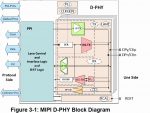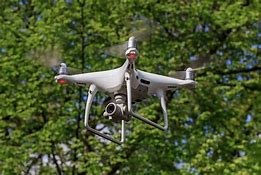If you are like me, you will get a 5G phone because of the high bandwidth it offers. However, there is a lot more to 5G than just fast data. In fact, one of the appealing features of 5G is low bandwidth communication. This is useful for edge devices that perform infrequent and low volume data transfers and depend on long battery life. Prior… Read More
Navigating Memory Choices for Your Next Low-Power Design
Choosing a memory architecture can be a daunting task. There are many options to choose from, each with their own power, performance, area and cost profile. The right choice can make a new design competitive and popular in the market. The wrong choice can doom the whole project to failure.
Vadhiraj Sankaranarayanan, senior technical… Read More
Qualcomm introduces Snapdragon 720G, 662 and 460 SoCs with Wi-Fi 6, NavIC Support
Qualcomm today announced three new chipsets for entry level and mid-range smartphones – Snapdragon 720G, Snapdragon 662, and Snapdragon 460. The first one promises to bring many of the Elite Gaming features of the 765G with support for HDR, dynamic color range and high-quality synchronized sound with Qualcomm aptX Adaptive.… Read More
A Bundle of Goodies in Bluetooth 5.2, LE Audio
You know that a technology is becoming a trend to watch when the Economist writes a piece on the topic. We know how big an investment goes into monetizing visual content for our phones, pads and TVs, through the likes of Warner Media, Disney and Netflix. Now there’s a big push into monetizing our ears, driven by Apple and others on the… Read More
Physical design team tackles challenging SoC
When describing the complexity of deep sub-micron systems on chip (SoCs), most engineers and their managers tend to refer to a combination of gate count, amount of embedded memory, and frequency of operation. If one’s task is to assess the complexity of the physical design effort for a given SoC, then there are numerous additional… Read More
Mixel Makes Major Move on MIPI D-PHY v2.5
The MIPI Alliance has been running hard since 2003 to stay on top of the changes in the mobile industry. MIPI now has 250 member companies and 12 active working groups, all focused on creating standards for connecting the building blocks in mobile systems. MIPI based interfaces are now used in cars, drones, IoT devices, and of course… Read More
Location Indoors: Bluetooth 5.1 Advances Accuracy
OK, so you’re in a giant mall, you want to find a store that sells gloves and you want to know how to get there. Or you’re in a supermarket and you need some obscure item, say capers, that doesn’t really fall under any of the main headings they post over the aisles. If you’re like most of us, certainly like me, this can be a frustrating experience.… Read More
Dynamic Spectrum Allocation to Help Crowded IoT Airwaves
Radio frequency bandwidth has become a precious commodity, with communications companies paying top dollar for prized pieces of the spectrum. However, many radio bands are not often used efficiently. Many existing radio protocols exchange data on a fixed pair of frequencies, tying up those frequencies for other users. When… Read More
The IoT will meet 5G soon, but not with the old SIM cards
By now you have probably realized that 5G is a lot more than an incremental change from previous 3G and 4G cellular technology. For instance, 5G will be used to connect our phones in completely new ways, such as with microcells in urban areas using mm-wavelength signals. 5G will also include two low power protocols that are intended… Read More
Compute at the Edge
At first glance, this seems like a ho-hum topic- just use whatever Arm or RISC-V solution you need – but think again. We’re now expecting to push an awful lot of functionality into these edge devices. Our imaginations don’t care about power, performance and cost; everything should be possible so let’s keep adding cool features.… Read More












Quantum Computing Technologies and Challenges